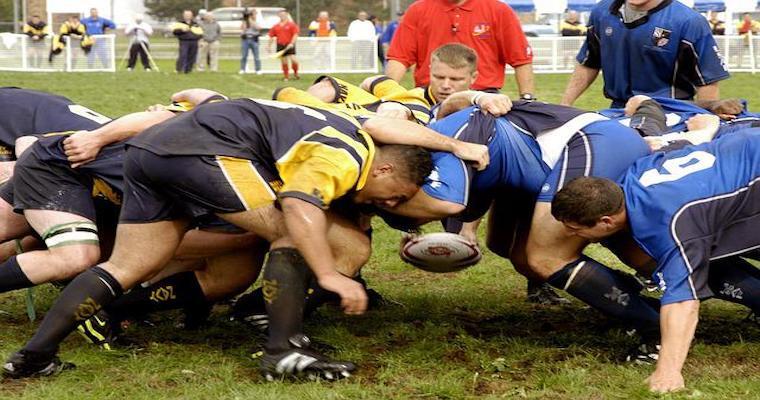
Rugby league and rugby union have many facets in common; they are playing an invasive game that requires speed, skill, coordination, mental agility, cooperation and so many more factors that allow the game to flow at the highest level. Without careful consideration, however, we might miss the differences as player grow and develop within the game. Though they are each playing rugby, they are playing different games also and few players transition so well between the codes at the highest level, though of course there could be several reasons to account for this lack of change or transfer between the codes.
Fifty-seven studies comprised the dataset for this study by Geeson-Brown and colleagues. What these researchers found was senior elite rugby union and rugby league forwards had significantly higher fat-free mass than senior sub-elite or junior elite athletes. The fat mass between rugby union playing standards and age categories showed slight differences only. One interesting finding that might not always compute it that the senior elite forwards from rugby league had less fat than junior elite forwards.
The advice from the researchers is to prioritise training and nutritional strategies that maximise fat-free mass development, especially in junior elite cohorts. This is a fine balance between sufficient training and development on one side and the possibility of injury and strain through competitive rugby on the other. The strength training necessary to withstand the intensive game of rugby can also act as a preventative measure. The nature and extent of training means a finely balanced, individually tailored programme for all rugby players of each code.
But what matters in this reverse engineering where we take the elite sample and work backwards towards junior elite and those transitioning from sub-elite to elite. From the outset, fat-free mass seems to be the factor that distinguishes between playing level and age groups in rugby union and rugby league. There are several factors here, such as physical qualities, match demands of each code and body composition overall. What seems most critical is careful and considered nutrition to meet the fat-free body composition demands for all players.
What we are seeking here is nutritional skills that allow players to train and develop with appropriate nutritional support from a dietician, for example. And to develop behavioural habits to meet the outlays from training and competition for all ages and stages of development. Like all athletes in sport, the hard work often happens in the kitchen and sitting at the kitchen table. Helping players to gain comfort preparing foods that meet their nutritional needs might be the time best spent for developing rugby players. Cooking and food preparation skills will aid a confidence and conform to manage the everyday needs to will challenge most players throughout their lives, especially for those meals that clubs do not provide.
Reference
Image by David Mark from Pixabay
And finally ..
If you would like support in your sporting career why not search our directory of sport performance specialists to find the right support for you.
